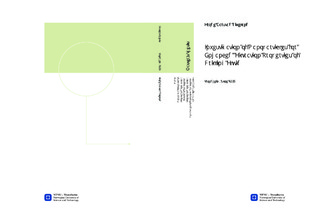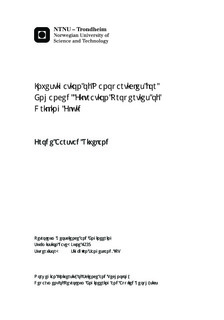| dc.description.abstract | In the past 20 years, the use of nanotechnology has contributed to new developments within medicine, electronics and biomaterials. In the past 10 years nanotechnology has also made progress in the energy industry. The drilling fluid is already one of the most advanced fluids that exist, some of the drilling fluids tasks are to cool and lubricate the drilling bit, transport cuttings out of the well, prevent formation damage, keep the formation chemical stable, be thermally stable, easy to pump, environment friendly and stabilize the pressure in the well. Within these five years, research has been done on nanotechnology to improve the drilling fluid performance. This report will focus on improvement of the filter cake performance to reduce the fluid loss rate to the formation, and how the nanomaterial affects the drilling fluid rheology.The main experiment to investigate the impact of nanoparticles to improve the filter cake was the API low temperature low pressure 30 min filter press test. The goal was to find the right type of nanoparticle and the optimum concentration. Different sizes and types of nanoparticles were tested. The main types were oil wet, water wet, porous and compact. These were tested in oil based and water based muds. For water based mud a reduction of 22,5 % was achieved but it also gave other complications like thicker mud cake and higher viscosity. Other nanoparticles gave a higher fluid loss rate but lower viscosity and higher yield point. The nanoparticles in the oil based mud showed a reduction in the fluid rate loss from 0,8 to 0,5 mL (62,5%). Both the base case and nanofluid showed little fluid loss and therefore the error sources might play a large role and the data are not trust worthy. This nanofluid showed no increase in filter cake thickness or in density, the fluid showed a higher yield point and a lower viscosity at high shear rate. The particle that might have given the reduction from 0,8 to 0,5 was further investigated in a more precise rheometer and tribology test. It showed a higher static friction and an uneven dynamic friction. This new rheometer also confirmed that the nanofluid had a higher yield point and a lower viscosity at high shear rate.The filtration tests with oil based mud gave low fluid loss rate which was one of the challenges in this report. It was therefore suggested for further work to do a different test to lower the sources of errors and make the test closer to real life. High pressure high temperature filter test with a ceramic filter was therefore suggested. Different particles should be tested and previously published studies shows good results with iron based particles and is suggested as one of the particle types that could be tested. Other papers also show a high degree of agglomeration among nanoparticles and that by surface modification with silanes, organic acids or alcohols could help. After a fluid has shown good indications with a LPLT or HPHT test flow through a core sample to test the permeability is suggested also to flow back to test the return permeability is advisable. Iron and silica based nanoparticles have shown good tribology properties in previous studies, ball on plates test as the one done in this study can also be investigated further with these kinds of nanoparticles. This study shows that the particles that were miscible were favorable. It also concludes that there were not found a specific nanoparticle or concentration that significantly improved the drilling fluid. A suggestion was made to keep the concentration below 1 wt% for practical and economic reasons. | nb_NO |

